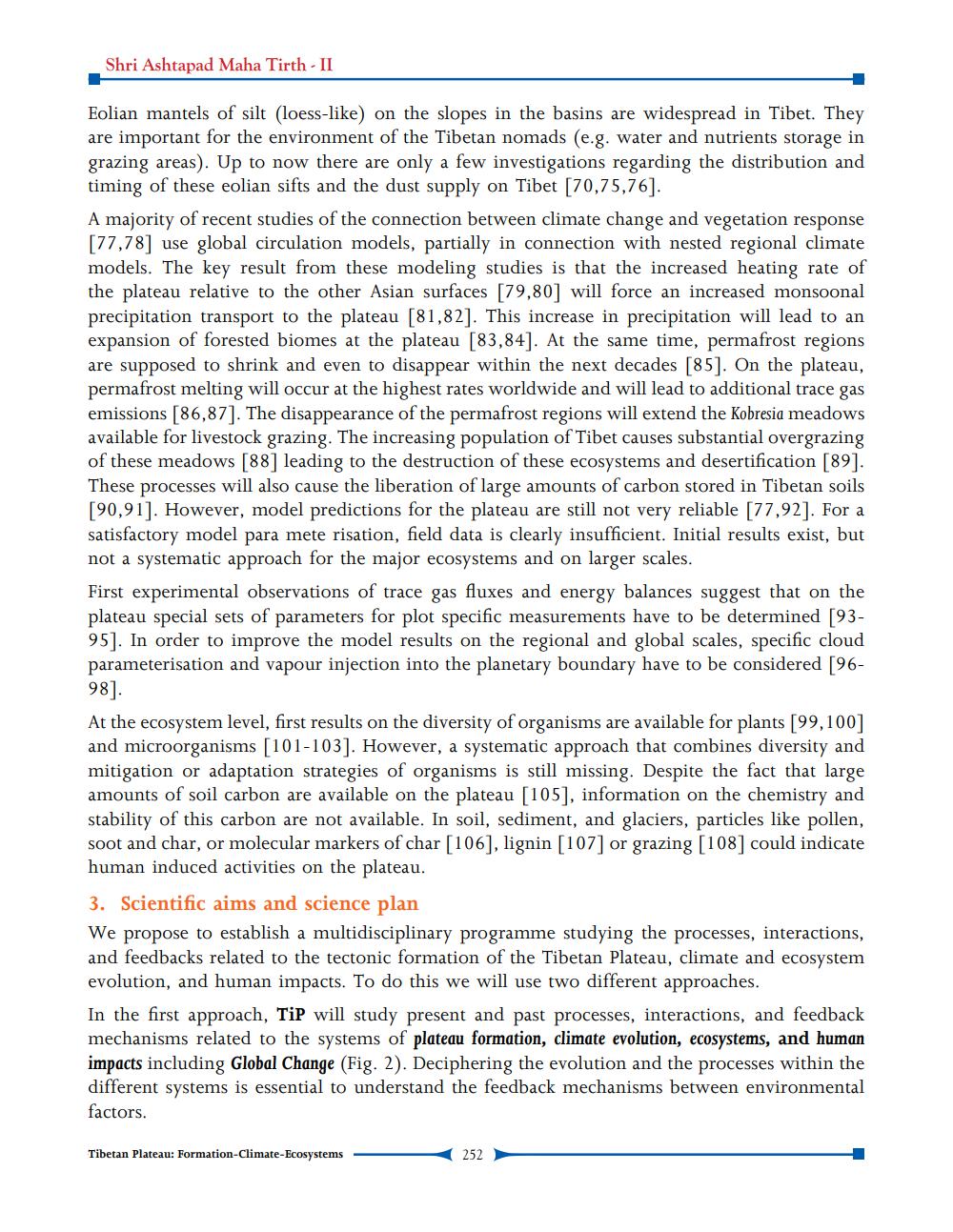________________
Shri Ashtapad Maha Tirth - II
Eolian mantels of silt (loess-like) on the slopes in the basins are widespread in Tibet. They are important for the environment of the Tibetan nomads (e.g. water and nutrients storage in grazing areas). Up to now there are only a few investigations regarding the distribution and timing of these eolian sifts and the dust supply on Tibet [70,75,76].
A majority of recent studies of the connection between climate change and vegetation response [77,78] use global circulation models, partially in connection with nested regional climate models. The key result from these modeling studies is that the increased heating rate of the plateau relative to the other Asian surfaces [79,80] will force an increased monsoonal precipitation transport to the plateau [81,82]. This increase in precipitation will lead to an expansion of forested biomes at the plateau [83,84]. At the same time, permafrost regions are supposed to shrink and even to disappear within the next decades [85]. On the plateau, permafrost melting will occur at the highest rates worldwide and will lead to additional trace gas emissions [86,87]. The disappearance of the permafrost regions will extend the Kobresia meadows available for livestock grazing. The increasing population of Tibet causes substantial overgrazing of these meadows [88] leading to the destruction of these ecosystems and desertification [89]. These processes will also cause the liberation of large amounts of carbon stored in Tibetan soils [90,91]. However, model predictions for the plateau are still not very reliable [77,92]. For a satisfactory model para mete risation, field data is clearly insufficient. Initial results exist, but not a systematic approach for the major ecosystems and on larger scales.
First experimental observations of trace gas fluxes and energy balances suggest that on the plateau special sets of parameters for plot specific measurements have to be determined [9395]. In order to improve the model results on the regional and global scales, specific cloud parameterisation and vapour injection into the planetary boundary have to be considered [96
98].
At the ecosystem level, first results on the diversity of organisms are available for plants [99,100] and microorganisms [101-103]. However, a systematic approach that combines diversity and mitigation or adaptation strategies of organisms is still missing. Despite the fact that large amounts of soil carbon are available on the plateau [105], information on the chemistry and stability of this carbon are not available. In soil, sediment, and glaciers, particles like pollen, soot and char, or molecular markers of char [106], lignin [107] or grazing [108] could indicate human induced activities on the plateau.
3. Scientific aims and science plan
We propose to establish a multidisciplinary programme studying the processes, interactions, and feedbacks related to the tectonic formation of the Tibetan Plateau, climate and ecosystem evolution, and human impacts. To do this we will use two different approaches.
In the first approach, TiP will study present and past processes, interactions, and feedback mechanisms related to the systems of plateau formation, climate evolution, ecosystems, and human impacts including Global Change (Fig. 2). Deciphering the evolution and the processes within the different systems is essential to understand the feedback mechanisms between environmental factors.
Tibetan Plateau: Formation-Climate-Ecosystems
252




